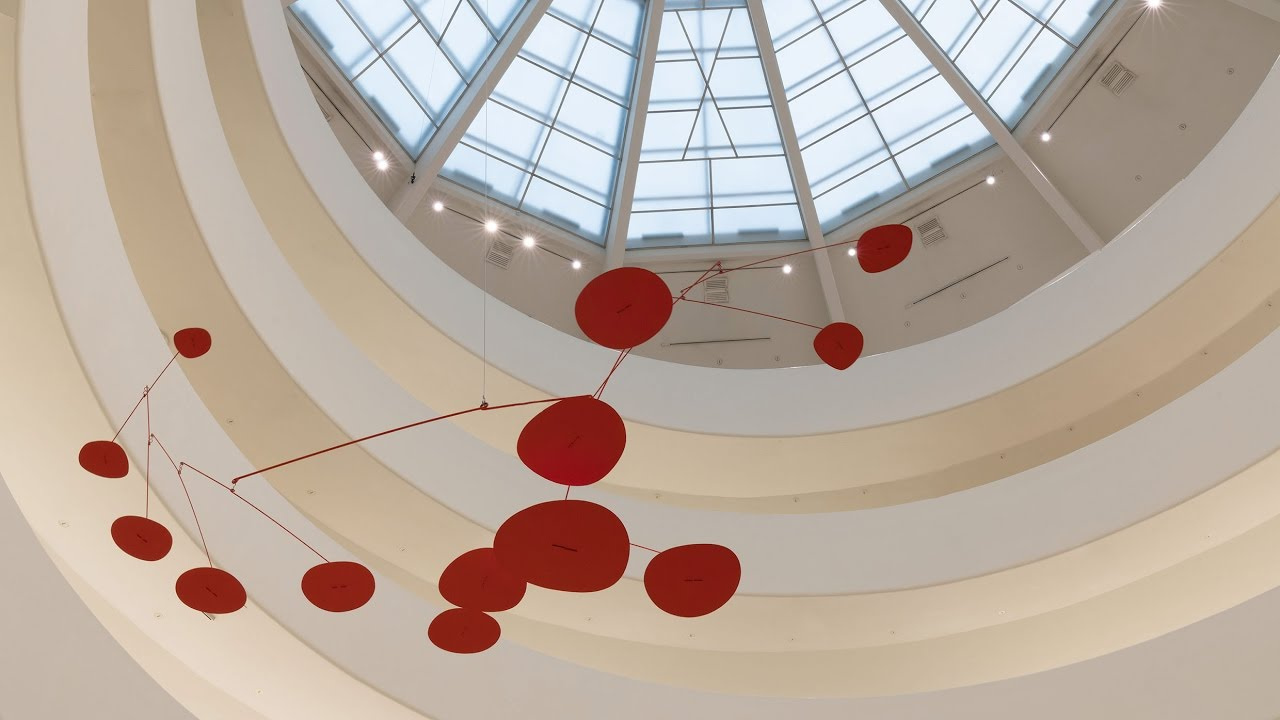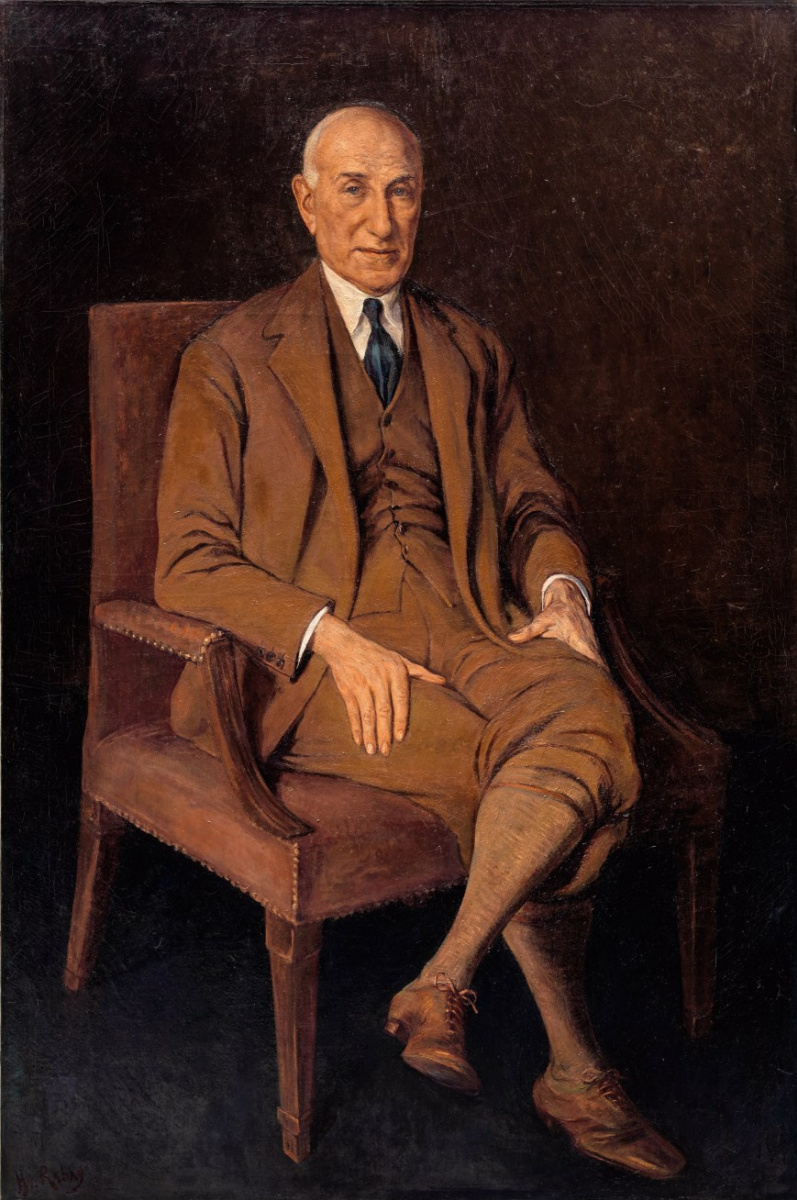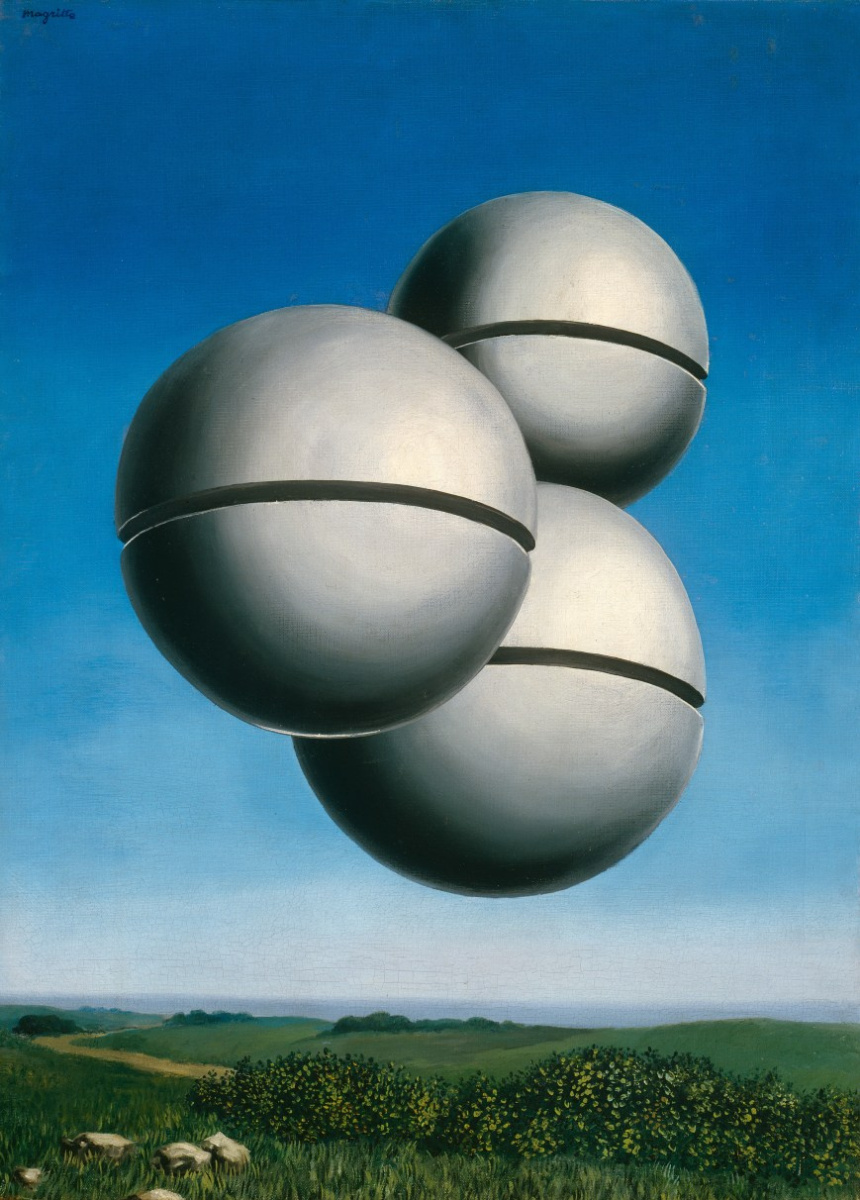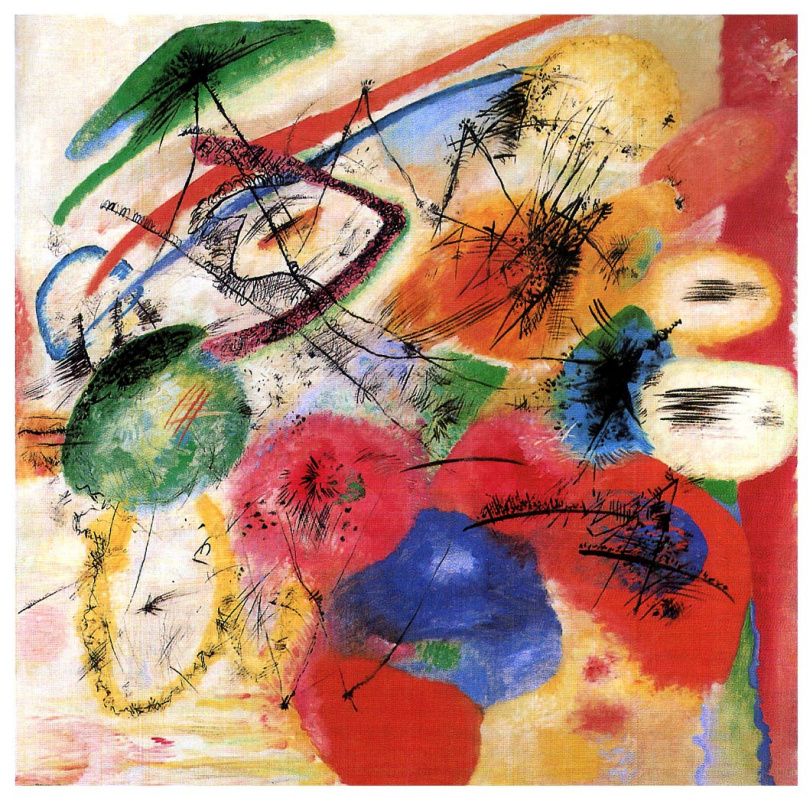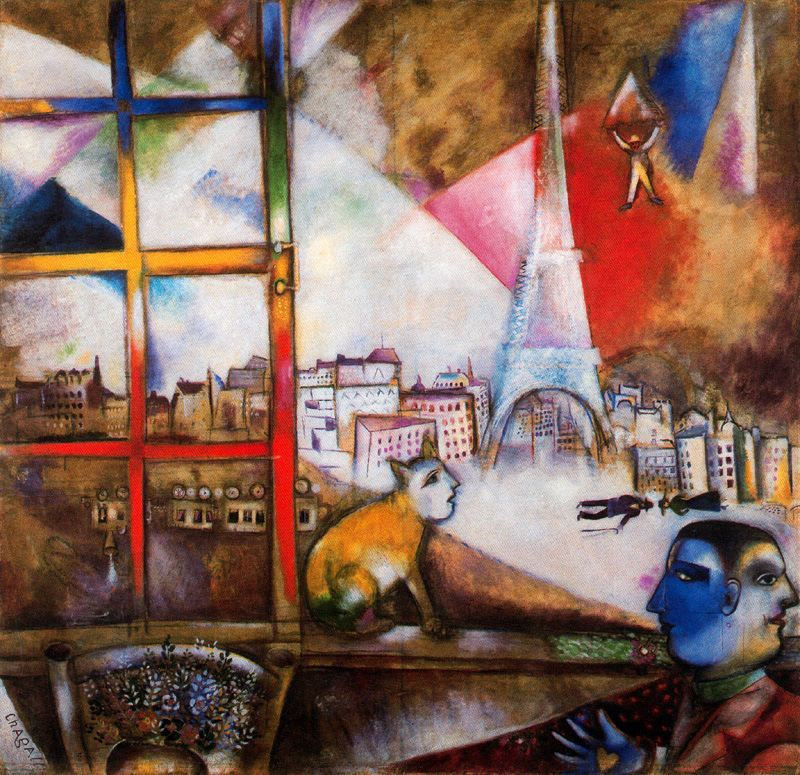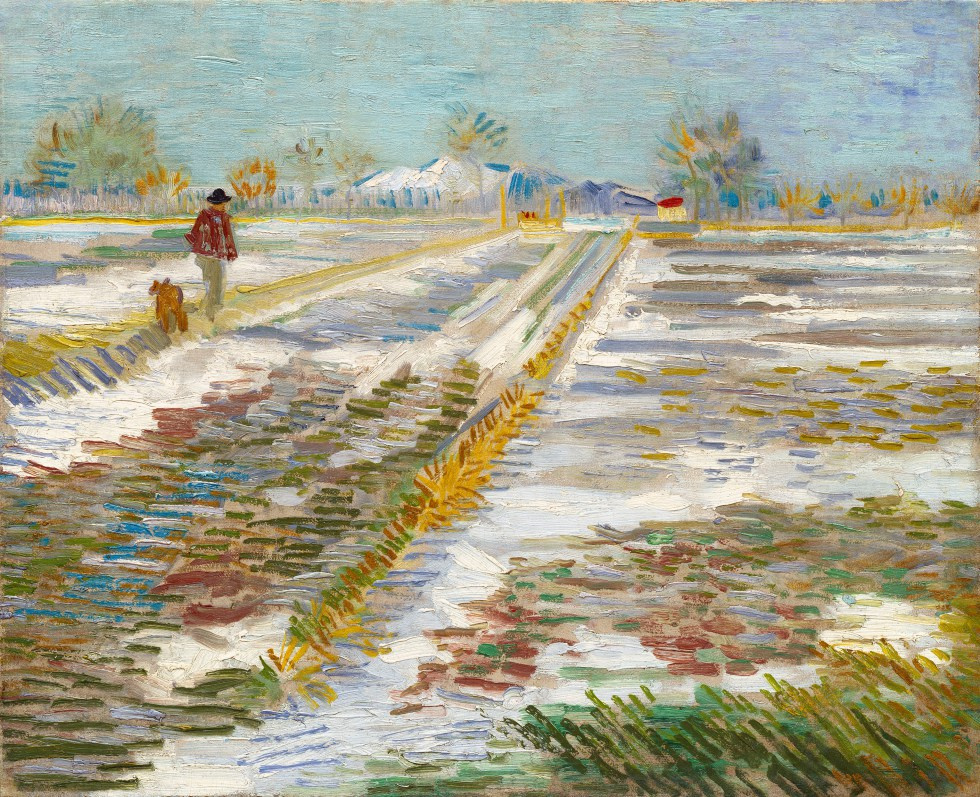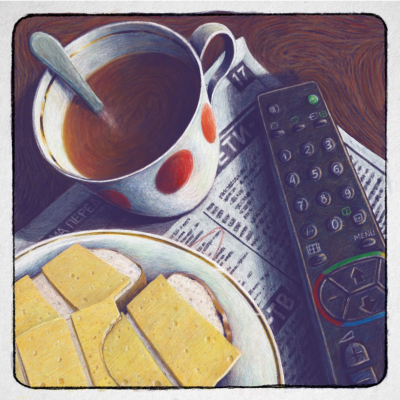Visionaries: Creating a Modern Guggenheim
Paintings by Paul Cézanne, Marc Chagall, Vasily Kandinsky, Paul Klee, Piet Mondrian, Pablo Picasso, Jackson Pollock, and Vincent van Gogh were the only love and the only passion of Solomon R. Guggenheim and the small group of enthusiasts who started the Guggenheim Museum. "Visionaries" exhibition at Guggenheim uncovers six collections of six art lovers that helped make the Guggenheim museum what it is.
Typical exhibition tells a story of an artist. Or artists. This exhibition is not one of them. This time paintings of Alexander Calder, Paul Cézanne, Marc Chagall, Vasily Kandinsky, Paul Klee, Fernand Léger, Piet Mondrian, Pablo Picasso, Jackson Pollock, and Vincent van Gogh tell us a story of those people who usually stay behind the artistic scene. There are no portraits, just colors, lines and emotions. And this is perfectly accurate because those paintings were the only love and the only passion of Solomon R. Guggenheim and the small group of enthusiasts who started the Guggenheim Museum.
Solomon Robert Guggenheim (1861 — 1949), prosperous mining industrialist and founder of the Yukon Gold Company has been collecting art privately since the 1890. Educated in Switzerland (studied German and business), married to Irene Rothschild (not a namesake), he used to buy Old Masters works as well as bucolic paintings of Jean-Antoine Watteau which seemed completely relevant to his status.
Everything changed in 1927 when Solomon turned 65. That year he met Baroness Hildegard Rebay von Ehrenwiesen, 36, well known and almost famous as Hilla Rebay because she was more an artist than a baroness.
Hilla von Rebay in 1910−20
(The Hilla von Rebay Foundation archives)
Guggenheim asked her to do his portrait, she declined because she was doing only nonobjective works.
"No, it’s probably because you don’t know how to do a portrait anymore," Guggenheim piqued.
In 1928, she began her portrait of Solomon R. Guggenheim. As he sat for her in her studio, she introduced him to the ideals of non-objective painting and encouraged him to begin a collection of such painting.
Hilla Rebay. Solomon R. Guggenheim. 1928.
They became friends, Guggenheim’s attitude to the nonobjective art changed soon and in 1930 he met Vasily Kandinsky in person and bought his painting for the first time. That’s how it started.
By 1939 he bought 50 Kandinskys
Тoday the Guggenheim foundation has assembled over 150 works of Kandinsky which form the nucleus of the collection.
"I got to feel those pictures so deeply
that I wanted them to live with me",
Guggenheim said once.
He began enthusiastically collect the "art of tomorrow" - especially nonobjective works. At first the paintings were hung in his private apartment in New York Plaza hotel. He made it accessible to the public by the appointment. The entire collection of Old Masters (and Watteau!) was sold at auction for $341,000. Guggenheim started to care about the future of the collection and the "Solomon R. Guggenheim Foundation" was founded in 1937 "for the promotion and encouragement of art and education in art". This institution is still managing all Guggenheim’s museums in the world.
Vasily Kandinsky. Composition 8. 1923.
Soon the walls of Plaza suite got overcrowded and in 1939 spacious quarters were rented at East 54-th St. The whole collection was gathered there and finally opened as "The Solomon R. Guggenheim Collection of Non-Objective Painting". Hilla Rebay headed the museum.
First Guggenheim had the idea to donate his holdings to the Metropolitan Museum of Art in New York. But ambitions grew up and in 1943 the progressive architect Frank Lloyd Wright was enlisted to design the permanent Guggenheim museum in New York. In writing to the architect, Rebay indicated that she needed "a fighter, a lover of space, an originator, a tester and a vice man".
It took over 10 years and over 700 sketches to agree the proposed "temple of spirit " project. The building was completed and opened to the public on October 21, 1959, ten years after Guggenheim’s death.
The architecture of the new museum (as almost any Guggenheim art related enterprise) started a storm in the press. "A war between architecture and painting, in which both come out badly maimed," wrote The New York Times; "The most beautiful building in America," disagreed New York Herald Tribune; "A building that should be put in a museum to show how mad the 20th Century is," claimed New York Daily Mirror. Twenty-one artists even signed a round-robin protest, refusing to exhibit their works in such unusual shaped space. What do they think now? Just curious.
Nowadays the building on Fifth Avenue became the icon of museum architecture and one of the most acclaimed buildings in New York. Solomon R. Guggenheim, whose first modern masters exhibition was ambitiously entitled "Art of tomorrow" definitely new something about tomorrow.
"They were all individuals who were crossing paths; who were buying and selling to and from one another; who were staging exhibitions at the same time; and who were collecting in parallel,"
explains exhibition curator Megan Fontanella.
Today’s Guggenheim Museum collection’s core consists of six collections of six art lovers helped make the Guggenheim museum what it is.
1. Solomon R. Guggenheim
Solomon R. Guggenheim collected Kandinsky, Leger, Chagall, Delaunay, Modigliani, and Rudolf Bauer.
Robert Delaunay. Circular Forms. 1930
Amedeo Modigliani, Jeanne Hebuterne with Yellow Sweater.1918−19.
Rudolf Bauer. Invention (Composition 31). 1933
2. Hilla Rebay
Hilla Rebay herself had a great collection of Kandinsky (works on paper) and Mondrian.
Her holdings became a part of Guggenheim Foundation in 1971.
Piet Mondrian. Composition. 1929.
Piet Mondrian. Composition No. VII. 1913.
Justin K. Thannhauser (1892−1976) was a German gallerist and art dealer, a close friend of Picasso, Louise Bourgeois, Henri Cartier-Bresson, Marcel Duchamp, Jean Renoir. In 1963 Thannhauser decided to bequeath the most and the essential part of his collection to the Guggenheim. That’s how classic modernism paintings of Pisarro, Dega, Picasso, Manet, Gauguin, Rousseau and many others became a part of Guggenheim collection.
Justin K. Thannhauser in his private residence, New York, November 1957
Camille Pissarro. The Hermitage at Pontoise. 1867.
Manet. Before the Mirror. 1876.
Paul Gauguin. Haere Mai. 1891
Henri Rousseau. The Football Players. 1908
The German art dealer Karl Nierendorf (1889−1947) came to America in 1936 and established the Nierendorf Gallery in New York. After his death the Guggenheim Foundation purchased Nierendorf’s estate. The collection reveals Nierendorf’s interest to the art of Expressionists, especially Paul Klee.
Joan Miro. Personage. 1925.
Paul Klee. Red Baloon. 1922.
Katherine S. Dreier (1877−1952), a friend of Hilla Rebay and Karl Nierendorf. Together with artists Marcel Duchamp and Man Ray, in 1920 Dreier founded the Societe Anonyme, Inc — Museum of modern art — the first ever collection in the US to be called a "museum of modern art". After her death the Guggenheim Foundation received a small but important bequest from the Dreier estate.
Katherine S. Dreier in the Société Anonyme collection exhibition at the Yale University Art Gallery
Juan Gris Newspaper and Fruit Dish. 1916.
Alexander Calder Untitled. 1935
And finally Peggy Guggenheim (1898−1979), Solomon’s niece, true art addict by her own words.
She opened her own gallery Art of this Century in New York in 1942. "My motto was ‘Buy a picture a day' and I lived up to it," - told Peggy. She was committed to the art of the Surrealists and pioneers of abstraction and also hosted emerging American artists such as Robert Montherwell and Jackson Pollock. By the way it was Peggy Guggenheim who settled down Pollock’s first one-person exhibition in 1943 and he was the only artist to receive a contract from Guggenheim, which afforded Pollock a regular income. After Word War II Peggy Guggenheim settled in Italy and opened her own Gallery in Venice. She donated her collection and the institution to the Guggenheim Foundation in 70's.
René Magritte. Voice of Space. 1931.
Picasso. The studio. 1928
The exhibition features over 170 modern works from the Guggenheim’s. According to the concept the paintings arranged by collections. That’s why we can see at least three different sets of Picasso paintings and graphics, two sets of Mondrian and Kandinsky as parts of different collections and in the different contexts. We can also see some rare known and rare exposing paintings of Kandinsky, Miro, Bauer, Malevich.
The culmination of the whole show is undoubtedly Jackson Pollock’s "Alchemy" (1947) exposed first time after the long and restoration conducted in 2014 by an international team of scientists.
At the first blush the "Visionaries" promised some colorful surrealistic show. But this time the visionaries are not only artists but people who had a vision of tomorrow and a flair for "art of tomorrow". As we can see their vision were accurate.
"They weren’t collecting what was fashionable, what was accepted, but seeking out art that was different,"
explains the exhibition curator Megan Fontanella.
And they had found what they seek for. Indeed.
"Visionaries" exhibition will be on till September 6, 2017, New York.
Curator: Megan Fontanella.
Written by Ivan Markovsky.
Sources: exhibition materials +
http://bit.ly/2mhS8fI
http://content.time.com/time/magazine/article/0,9171,892851,00.html
https://youtu.be/8amoeCaoPQc
https://www.guggenheim.org/blogs/checklist/the-makers-of-the-guggenheim
